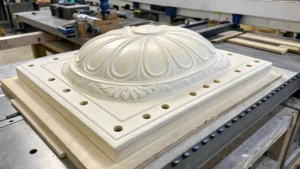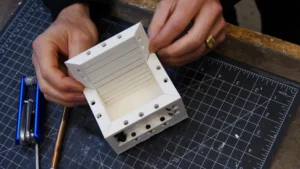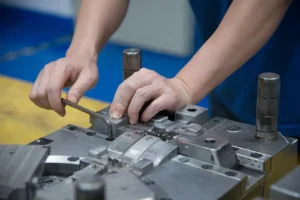Introduction
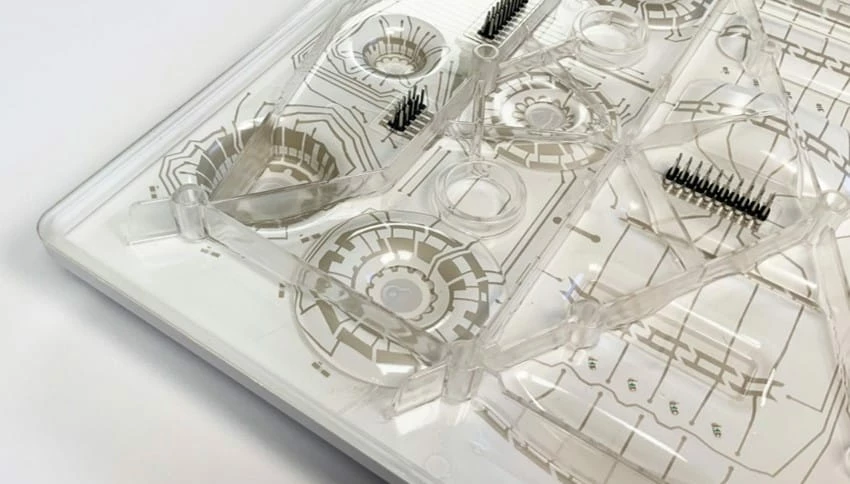
The electronics industry is one of the fastest-growing sectors globally, driven by the constant demand for innovative and high-performance devices. From smartphones and laptops to complex circuit boards and connectors, electronics manufacturing relies heavily on precision and reliability. Molds in Electronics play an essential role in ensuring that electronic components meet the strict requirements for functionality, performance, and quality. This article explores why molds are crucial in electronics manufacturing and how they contribute to the production of reliable, high-quality products.
1. Precision in Component Production

Role of Molds:
Molds in Electronics manufacturing, even the smallest deviation in a component’s dimensions can lead to malfunctioning products. Molds provide a means to produce components with high precision, ensuring that every piece is manufactured to exact specifications. This is particularly critical for complex electronic parts such as connectors, microchips, and enclosures, where even minute inaccuracies can affect performance and functionality.
How Molds Ensure Precision:
Molds in Electronics, particularly injection molds, are designed to produce highly accurate parts with tight tolerances. Advanced molding techniques allow for the consistent production of components, ensuring that they fit together perfectly in larger assemblies. The precision achieved through molding is critical for ensuring that electronic devices work as intended and meet the expectations of both manufacturers and consumers.
2. Cost-Efficiency in Mass Production
Role of Molds:
One of the key advantages of using molds in electronics manufacturing is their ability to produce large quantities of components at a relatively low cost. Once a mold is designed and created, it can be used to produce thousands or even millions of identical parts, minimizing production costs and making it easier to scale operations.
How Molds Enable Cost-Effective Production:
Molds in Electronics allows for high-volume, automated production, which reduces labor costs and increases production speed. The efficiency of molds in mass production ensures that manufacturers can meet the high demand for electronic components while keeping costs low. Additionally, molds help reduce material waste, further improving cost-effectiveness in the manufacturing process.
3. Material Versatility for Diverse Electronic Components
Role of Molds:
Molds in Electronics can be used with a wide variety of materials, making them suitable for producing different types of electronic components. Materials such as plastics, silicone, metals, and even composites are often used in electronics manufacturing, each chosen based on the specific requirements of the component.
How Molds Support Material Versatility:
Different components require different material properties. For example, enclosures for Molds in Electronics may need to be made from durable, lightweight plastics, while connectors and other small parts might require metal. Molds allow for the precise shaping of these materials into the required form, ensuring that the final product meets the necessary strength, durability, and functionality standards. This versatility is key to producing a wide range of electronic devices with different materials.
4. High-Speed Production and Consistency
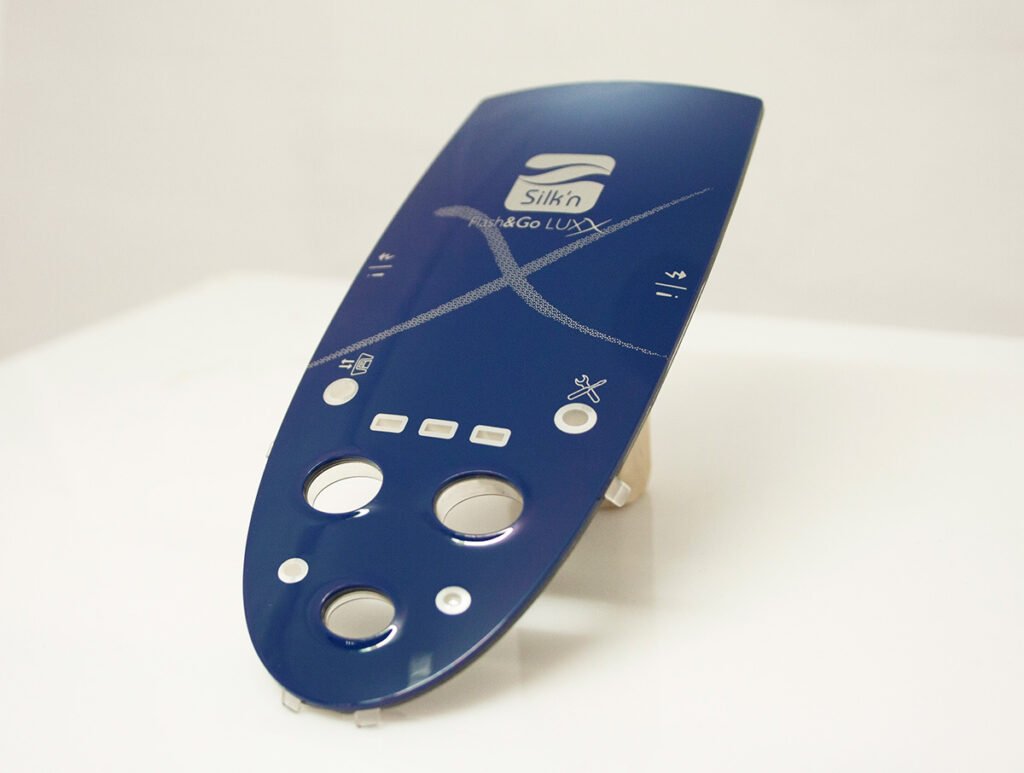
Role of Molds:
The demand for faster production times in the Molds in Electronics industry has driven the need for high-speed manufacturing processes. Molds facilitate rapid production of electronic components by providing a fast, repeatable process that can produce large quantities of parts in a short amount of time.
How Molds Enable High-Speed Production:
Once a Molds in Electronics is created, it can be used to produce parts at a high speed, significantly reducing production time. Molding processes, such as injection molding, are automated, which allows manufacturers to produce large quantities of components with minimal human intervention. This not only speeds up the production process but also ensures consistency across all parts, which is essential for the reliability and functionality of electronic devices.
5. Meeting Quality and Regulatory Standards
Role of Molds:
Molds in Electronics industry is governed by strict quality standards and regulations to ensure the safety and performance of electronic devices. Molds are essential in ensuring that components meet these standards, as they enable the production of parts that are free from defects and conform to the required specifications.
How Molds Help Meet Quality Standards:
Molds in Electronics are designed with precision and accuracy to produce components that meet strict quality control criteria. This is especially important for parts that will be used in critical applications, such as medical devices, automotive electronics, and aerospace technology. Molding ensures that components are consistent in terms of size, shape, and material properties, which is essential for compliance with industry regulations such as ISO and RoHS (Restriction of Hazardous Substances).
6. Enabling Complex Designs and Miniaturization
Role of Molds:
The increasing demand for smaller, more compact electronic devices has led to the miniaturization of components. Molds in Electronics allow manufacturers to create complex, intricate designs that fit into smaller spaces while maintaining functionality.
How Molds Enable Miniaturization:
Molds in Electronics technologies, such as precision injection molding, allow for the creation of highly detailed, intricate components with small tolerances. This is especially useful for producing tiny, complex parts, such as microchips, connectors, and sensors, that are critical to modern electronic devices. As the demand for smaller and more powerful devices increases, molds continue to be essential for producing the small, complex parts required for miniaturization.
7. Customization for Specific Electronic Applications
Role of Molds:
As electronic devices become more specialized, manufacturers are increasingly required to produce customized components to meet specific performance needs. Molds play a key role in the customization of parts, allowing manufacturers to create components tailored to the unique requirements of each device.
How Molds Support Customization:
Molds can be designed to accommodate the specific needs of different applications, such as creating components with special features, unique shapes, or specific material properties. This is particularly important for industries like telecommunications, automotive electronics, and medical devices, where the functionality of components must be tailored to the device’s intended use. By using molds, manufacturers can produce custom parts that meet the precise specifications of their clients or end-users.
Conclusion
Molds are an integral part of electronics manufacturing, enabling the production of precise, high-quality components that meet the demands of modern technology. From ensuring precision and cost-efficiency to supporting material versatility and customization, molds play a crucial role in the success of electronic products. As the electronics industry continues to evolve, molds will remain essential for producing reliable, high-performance components that meet the ever-growing demands of consumers and businesses alike.
Frequently Asked Questions (FAQs)
Q1: Why are molds important in electronics manufacturing?
A: Molds ensure precision and consistency in the production of electronic components, reducing costs and ensuring the quality and reliability of electronic devices.
Q2: What types of materials are used in molding for electronics?
A: Common materials include plastics, metals, silicone, and composites, which are chosen based on the requirements of the specific electronic component.
Q3: How do molds contribute to cost-efficiency in electronics production?
A: Molds allow for mass production of identical components, which reduces labor costs, minimizes material waste, and increases production speed, making the process more cost-effective.
Q4: How does molding enable miniaturization in electronics?
A: Molding technologies allow for the creation of small, intricate components with high precision, making it possible to produce miniaturized parts for modern electronic devices.
Q5: Can molds be customized for specific electronic applications?
A: Yes, molds can be designed to produce custom components tailored to the specific needs of different electronic devices, ensuring that they meet performance requirements.
Sources:
Electronics Manufacturing – “The Role of Molds in Precision Electronics Production.”
Technology & Innovation – “Mold Design for High-Volume Electronics Manufacturing.”
Plastics Engineering – “Molding Techniques in Electronics Industry.”

